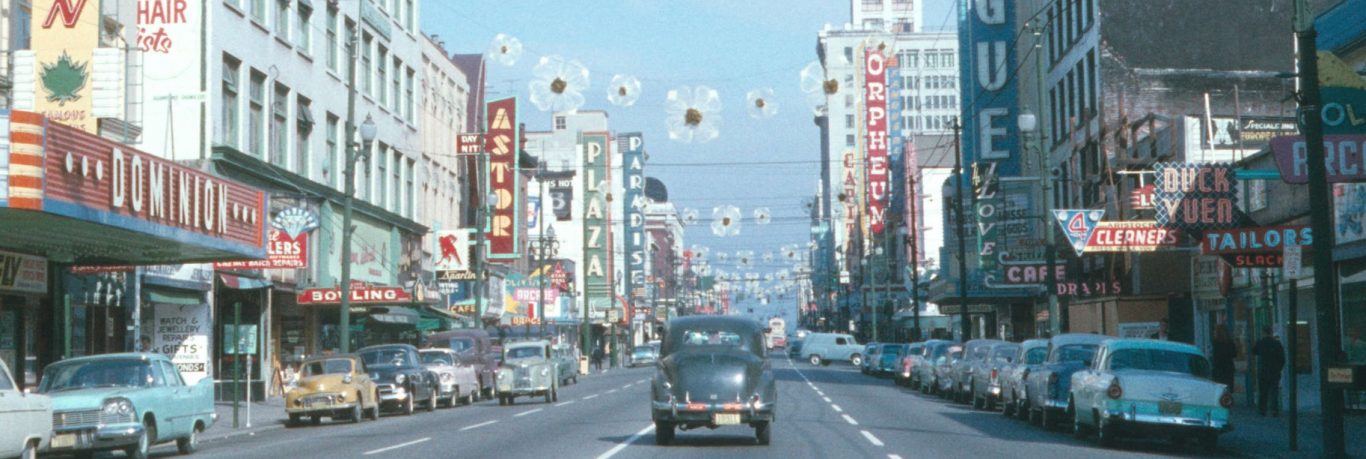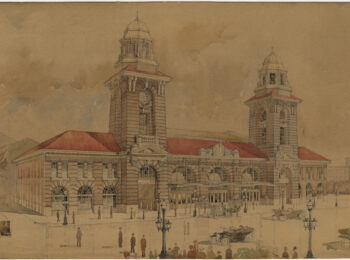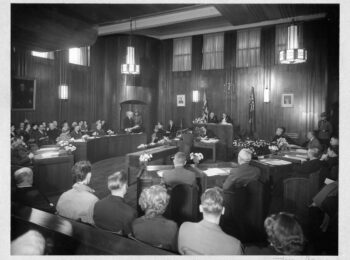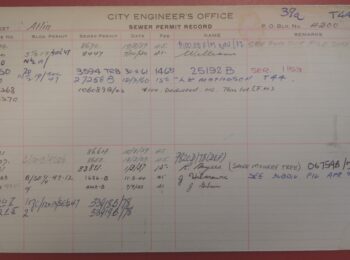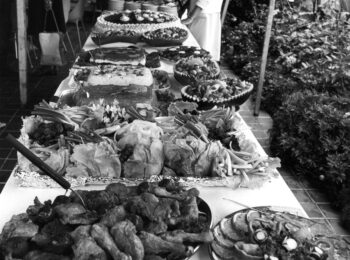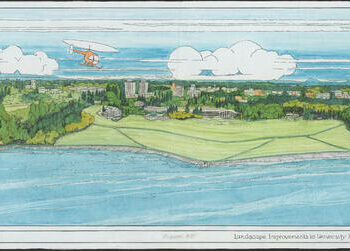Some of the more curious acquisitions by first City Archivist Major J.S. Matthews have taken time to make fully discoverable in our online database. One such item is a bound volume bearing the inscription “Frondes superbae Zealandia: Our garden ferns” on its title page and filled with pressed botanical specimens, mostly from New Zealand. It was likely created sometime between 1900 and 1910.
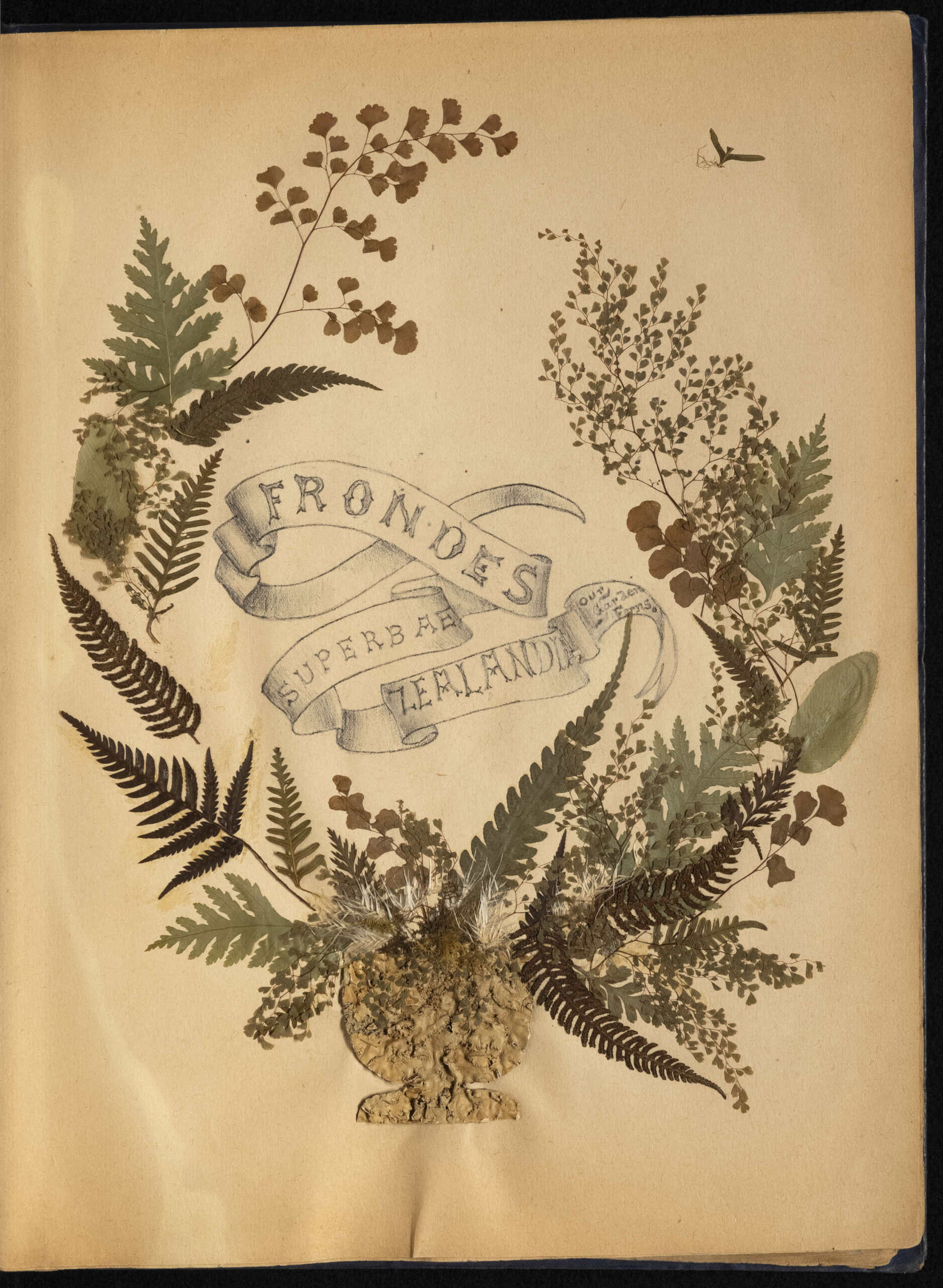
Glued to the inside cover, in typical Matthews’ fashion, is a typed sheet describing how the album came to the Archives. The album, Matthews writes, “is said to be the work of Mr [sic.] De Vere Mannion” and was given by him to Sabina Mannion. Sabina Mannion then passed it to Martha Mathison, wife of Dr. Robert “Bob” Mathison, most likely in the 1920s, “as a token of gratitude for services of a private nature.” Bob Mathison then donated it to the Archives in July 1938. The services of a private nature, according to other Matthews’ notes in the Archives, was that of advice given to Sabina regarding the selling of property in the Kelowna area.
Who were the Mannions?
Joseph Mannion, the father of De Vere Mannion, was an early settler to the Burrard Inlet area. He was originally from County Mayo, Ireland, and was studying for the Catholic priesthood when the stories of adventure and riches to be found in British Columbia’s gold rush lured him to North America in 1862. He failed to make his fortune in gold, however, and ended up working in the logging industry for a few years. After that, he bought a share in the Granville Hotel in Granville (also known as Gastown) and eventually became its sole proprietor. He fortuitously sold the hotel just prior to the Great Fire of 1886, which wiped out most of the newly incorporated City of Vancouver, and moved to a ranch on Bowen Island. He remained connected to Vancouver after his move and served on the first City Council as an Alderman from 1886-1887.
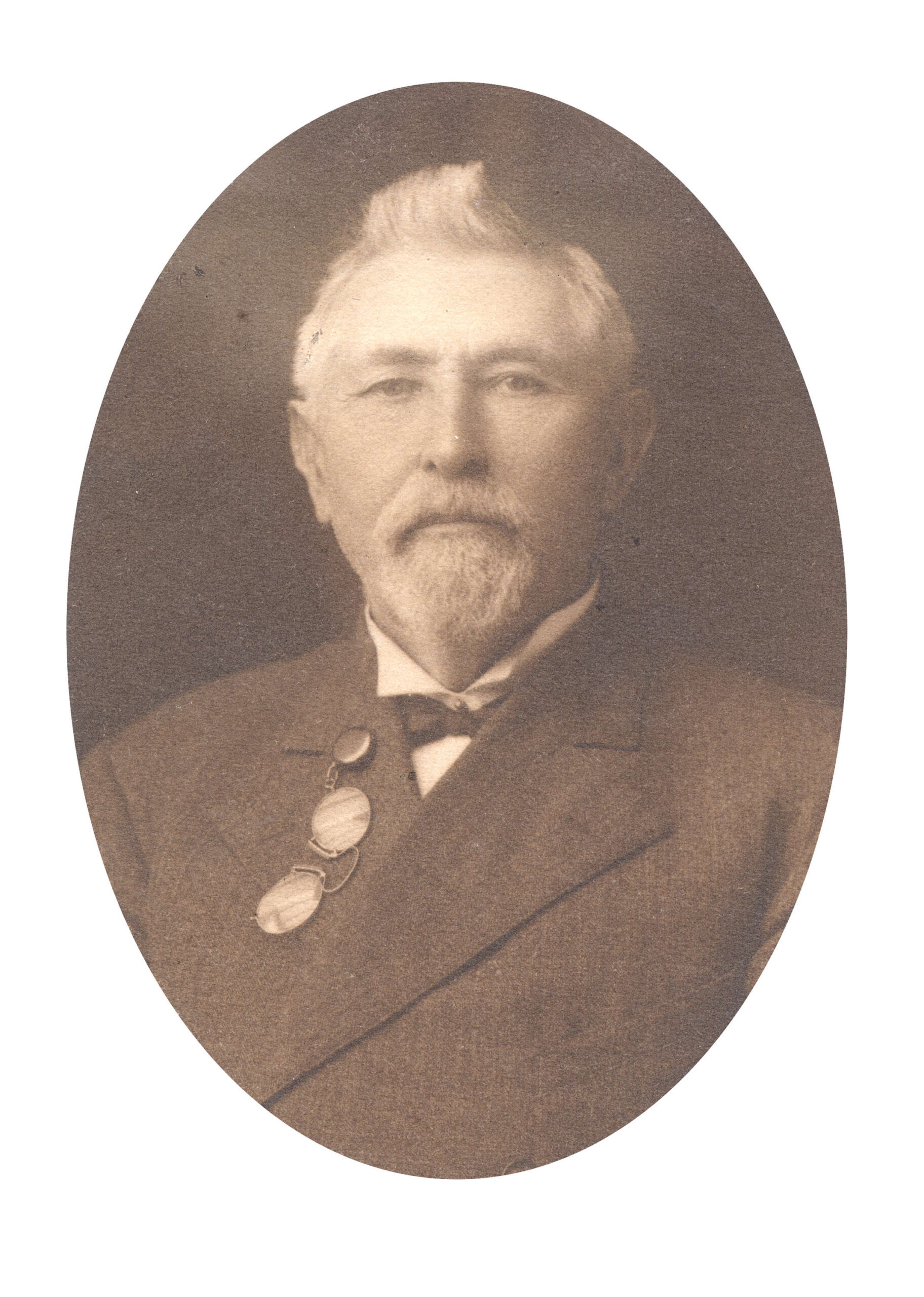
During his early years in British Columbia, Joseph married Takood, a Squamish woman, and the daughter of Klah Chaw. They had a daughter, whom they named Margaret Craddock (who later became Margaret Christie) and a son, John De Vere Mannion, the said creator of the album of pressed ferns. After Takood’s death, Joseph married Sabina Adams Grant in 1881. They had a daughter, Norah May Craddock (later Norah Wilmot) and three sons, Charles, Gerald Craddock, and Clarence. Sabina was the Mrs. Mannion who passed the album on to Dr. and Mrs. Mathison.

Information about De Vere is somewhat scant, and it is unclear what year he left the Vancouver area, though it was likely in the mid-to late 1890s. According to Matthews, he worked as an engineer on the Union Steamship’s S.S. Cutch, where he received his engineering training, before going onto Scotland. His passage to New Zealand, according to Matthews’ notes taken from Dr. Mathison, came about because De Vere stepped in for a ship engineer who was unwilling to make the journey. De Vere’s name appears in the appendix entitled “Return of Masters, Mates and Engineers to whom Certificates of Competency were issued during the Year ended 31st March 1899”, found in the Journals of the House of Representatives of New Zealand 1899, Vol III. He is listed as receiving his 1st class engineer certification in the foreign trade class, with issue date of June 2, 1898.

A year and a half after being issued his certification, on November 27, 1899, De Vere married Catherine (Kate) Henrietta Skelton, the daughter of Edward and Margaret (née Hamon) Skelton at All Saints’ Church, Auckland. De Vere and Catherine settled in the Auckland area and had one son and two daughters: Gerald, Nancy, and Molly. By 1914, De Vere was working as the power station superintendent of the Auckland Electric Tramway Company’s powerhouse, Hobson Street, Auckland, according to the New Zealand electoral listings of that year.
In the autumn (our spring) of 1938, Catherine died. A few months later, coincidentally, the album came to live at the Archives, though via Bob Mathison. De Vere lived for another sixteen years after his wife’s death, and died in 1954.
The Album
Giving an album of pressed and artfully arranged fern fronds and other plant specimens today might not seem like a tremendous thank you gift, unless you are a botanist or plant enthusiast. However, for the recipients of this album–first Sabina Mannion, then Dr. and Mrs. Mathison, and finally Major Matthews and the Archives–it would have likely been greatly appreciated and even treasured.
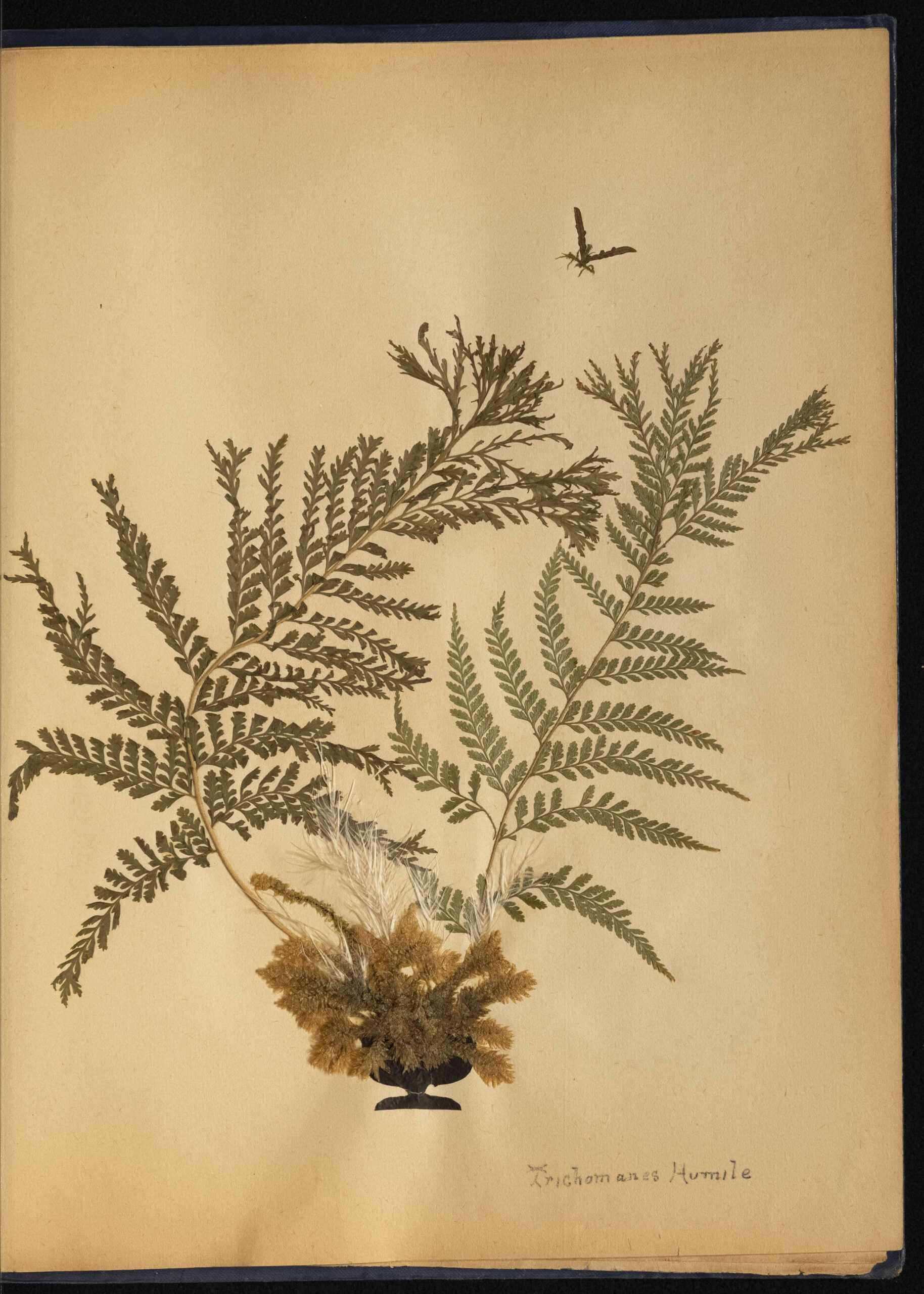
The popularity of collecting and preserving plant specimens stems largely from the Victorian era: an era in which studying nature was looked upon as a respected pastime. Women, in particular, were encouraged to create “dainty” albums of pressed plants, as described in an article from the August 1894 issue of The Ladies’ Home Journal:
If you have never seen a wild-flower book you can have no idea how pretty and dainty they are, and what acceptable gifts they make for friends who love mementoes of places, are fond of flowers, or even those who are in any degree poetic and artistic. Any woman … may collect flowers, grasses, ferns and mosses enough to give her friends charming surprises on birthdays or Christmas.
Because women were so encouraged in this pastime, the album could conceivably have been created by Catherine, rather than De Vere. Regardless, however, the creation of this album was probably inspired by the fern craze, or Pteridomania, which initially seized England in the 1850s, and gained popularity in New Zealand twenty years later. Or it may have been an ode to De Vere’s adopted and Catherine’s birth country, where ferns have long held a particularly special place in the nation’s zeitgeist.
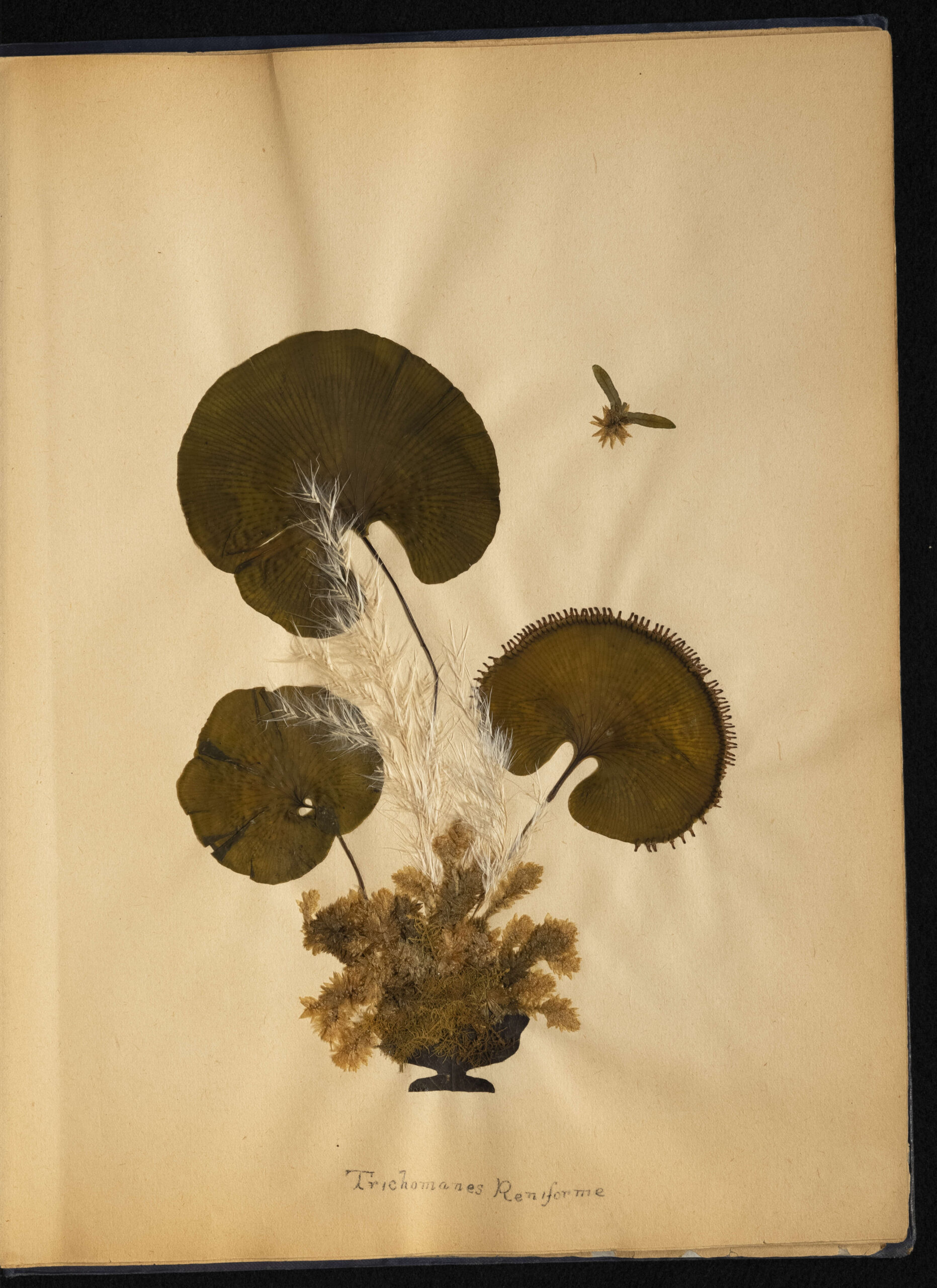
The album contains 40 pages of mainly fern specimens. Various grasses, and lycopods (clubmosses), liverworts and other primordial plants have been used along with the fern fronds to create artful arrangements. Some arrangements contain deciduous leaves cut in the shape of urn-like vases, from which the fronds and grass sprays cascade, while other bouquets of specimens are tied neatly together with yellow or green ribbon. Most pages have been inscribed with the fern’s Latin name, though some are misspelt or the names have since changed. The fern specimens range from lancier-like fronds of the Polypodium lanceolata, to the more delicate Adiantum afinne, to the lily-pad-like Trichomanes reniforme.
Though fragile, the preserved specimens are in good shape and give a fascinating glimpse into the past and a family’s history.
Side note: Joseph Mannion saved a copy of The Moodyville Tickler, which after his death, his daughter, Margaret (née Mannion) Christie donated to the Archives. The Moodyville Tickler was the first newspapers published in the Burrard Inlet area, but also only lasted a few issues, perhaps in part because of its expensive price tag of 50 cents a copy.
